Sunday, September 30, 2007
Photo department prestige snowballs
The internationally recognized travel gurus at travel blog Gadling picked the Holla's picture from the previous entry as their "Photo of the Day" yesterday. Thanks, Gadlingers!
Thursday, September 27, 2007
On the Road in Mexico
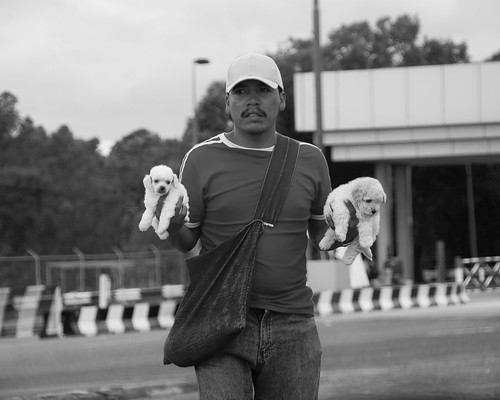 Mexican roads are good, but they ain't cheap. In a system that made your correspondent's little policy-wonk heart twitter, they have a system of high-quality, high-speed highways that made cruising from Oaxaca to Puebla (and onward) a relative snap, paid for with substantial tolls for the people who use them. It was not a cheap way to get across the country, and we were surprised every time we saw a tollbooth: "Again?" Of course, there were certain consumer opportunities at the lines for the tollbooths that we may not have otherwise encountered, so it wasn't all bad.
Mexican roads are good, but they ain't cheap. In a system that made your correspondent's little policy-wonk heart twitter, they have a system of high-quality, high-speed highways that made cruising from Oaxaca to Puebla (and onward) a relative snap, paid for with substantial tolls for the people who use them. It was not a cheap way to get across the country, and we were surprised every time we saw a tollbooth: "Again?" Of course, there were certain consumer opportunities at the lines for the tollbooths that we may not have otherwise encountered, so it wasn't all bad.
Wednesday, September 26, 2007
Of Oaxaca, Part the Last
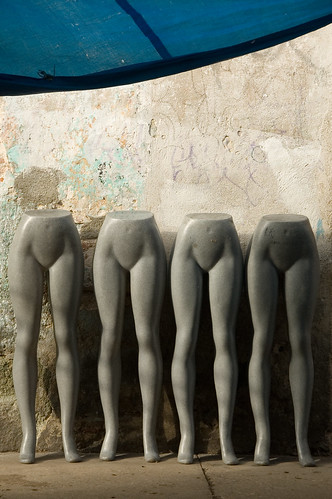
So, the moral of the story is that Oaxaca is, like, really cool. Your correspondent would rank it as his favorite place that the staff stopped by in Mexico on this trip. The street food is great; the culture is great; the scenery is great. Speaking of scenery, the staff photographer was also a big fan of some of the unusual sights on the streets of town, from the motorcycle lineup by the Domino's to the street markets being set up in the morning, as in above picture of hot nude models preparing for a long day of modeling jeans. It was a shame we only had about 20 hours there, before we had to depart for Puebla.
Monday, September 24, 2007
Of Oaxaca, Part the Fourth
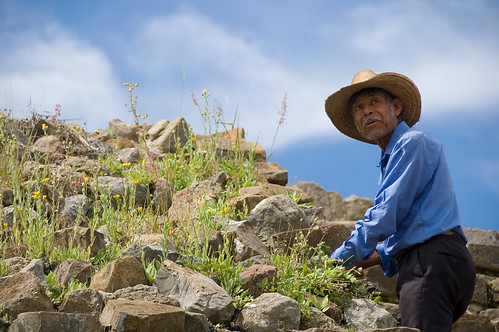
On the morning of our departure from Oaxaca, we stopped at Monte Alban, one of the earliest known cities of the Americas. It's a beautiful location, on top of a mountain rising about 1,300 feet above the city of Oaxaca (which is itself at 5,000 feet of elevation). The site is very nicely restored, with some fascinating carvings visible and great views in all directions from the tops of the temples. It was particularly cool after having visited so many Mayan ruins in Guatemala to see this Zapotec site that pre-dated those by centuries, but still showed some important similarities to its later, southern neighbors. The Zapotecs also had a cooler name than the Mayas, but we can't really blame anyone for that.
The guy above was one of many baking in the mid-day sun and removing weeds from between the rocks on the restored temples.
Wednesday, September 19, 2007
Oaxaca Intermission

A random picture from Oaxaca and a brief update on local events in D.C.: The Holla staff crash course in Latvian is past week divi. That's "two" in Latvian. Unfortunately, I can't report that we're in week three, because yesterday our teacher told us that the word for "three" is too complicated for us right now. It's going to be a long two plus two plus two plus two months.
Tuesday, September 18, 2007
Of Oaxaca, Part the Thrid
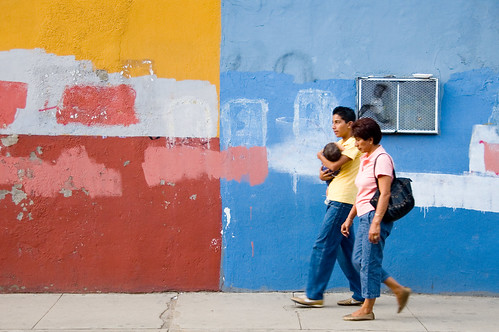
One of the most distinctive features of Oaxaca is the graffiti war being waged publicly on the center's streets. I suppose there may be taggers competing against each other, but the most noticeable battle is between the taggers and the property owners or perhaps municipal clean-up crews. Almost every building has been tagged, painted over, and tagged again. The re-painting usually doesn't match the original color of the buildings, resulting in some striking patchwork paint jobs... almost all with a fresh batch of graffiti tags on top. The staff photographer dedicated a fair amount of his limited time in Oaxaca to capturing Oaxacans in their natural tag-infested environment.
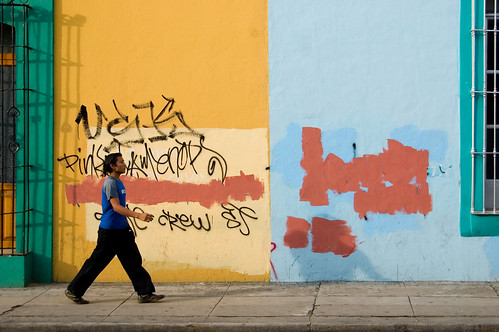
Monday, September 17, 2007
Of Oaxaca, Part the Second
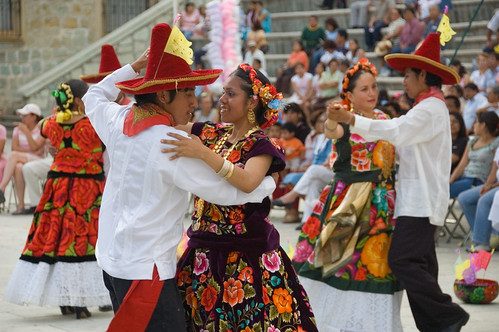
(Our deliberately paced chronological retelling of our journey home continues...)
We had heard that Oaxaca was a lot like Antigua, Guatemala, so we weren't totally sure what to expect. We were pleasantly surprised. We had some delicious selections from the abundant street food, saw a good museum and some baroque churches, went to a couple really cool bars, and ate fantastic food. On top of all that, we happened to be there during the weeks of Oaxaca's annual fair. The big event is held on two consecutive Mondays, with huge crowds and lots of cultural demonstrations from around the region, particularly highlighting dance. We weren't there on a Monday, but we stumbled upon a couple different shows of what appeared to be high school kids dressed in traditional costumes and dancing. They were actually good, and for the most part, few of them seemed to have been forced to go through the paces on these dances. Perhaps this was aided by the fact that at the first performance we saw, there were other high school kids roaming the crowd offering free cups of mezcal and of some other local alcoholic beverage - and apparently doing so in some official capacity. This correspondent could certainly be convinced to at least attend (although maybe not participate in) a lot more dance performances were free booze a universally understood and standard part of the package.
More pictures of the colorful costumes here.
Friday, September 14, 2007
Of Oaxaca, part the first

The countryside on our drive from Puerto Arista to Oaxaca City was gorgeous. Stunning canyons and rolling hills covered with cacti. As we neared Oaxaca, much of the land was covered with neatly planted rows of agave, the plant used to make mezcal and tequila. Your correspondent sampled a couple varieties of mezcal, which is native to Oaxaca (Tequila being originally from Jalisco). We'll stick with tequila from here on out.
Thursday, September 13, 2007
Of Puerto Arista

It has been well over a month since your correspondents packed up the shop and departed Guatemala, en route to Washington. It would be a bit silly to give a full play-by-play of the trip, but we'll be publishing photos and selected anecdotes here for however long they last. We also have a couple other major projects from Guatemala that linger unfinished and will be published here and on Flickr at some point, so stay tuned.
Anyway, our final day in Guatemala we stayed at the same hotel, in the same room, where we had stayed for a few weeks while we looked for permanent housing upon our arrival two years ago. I'm sure a more philosophical correspondent would hold forth here about cycles and symbolism and such, but mostly we were too tired for such lofty rumination. We had breakfast with another Embassy employee who had just driven down to Guatemala through Mexico, and seemed to think we were going to die in the barren wilderness of Chiapas because there is "absolutely nothing there." He was closer to correct than we thought, as the coastal road through Chiapas is pretty barren, with not much in the way of roadside fast food or hotels. Fortunately, there was some hyperbole in his warning, and we took a side road to the beach town of Puerto Arista for the night. The hotel where we had made a reservation turned out to be a dump, ramshackle and smelly and probably flea-ridden. We went looking for other options and found them not much less dumpy, so we wound up back at our original hotel, an interior view of which (above) shows the TV, which had two channels and apparently got signal from two completely different antennae(?), which details were provided to guests via Sharpie on the wall.
Scruffy as our hotel may have been, a hotel on the beach is still a hotel on the beach. We had a lovely meal and delicious Mexican beer watching the sun set over the Pacific, discovered that there were actually more biting insects on the beach than in our room, and managed to get a relatively good night's sleep despite some concerns that at a hotel so shabby, our car (or its valuable trunkload of contents) was surely going to be stolen in the night.
It wasn't, and we got an early start the next day for Oaxaca, of which more soon.
Sunday, September 09, 2007
Big Money Political Advertising
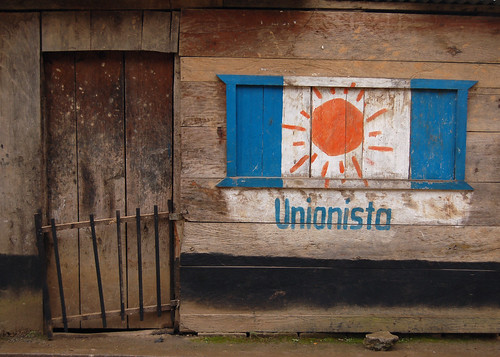 Guatemalan elections happened on Sunday, September 9. The Holla staff hasn't been in Guatemala for well over a month at this point, so we can't provide any first-hand information about the election or the winners. As of this writing, no results are available, but the expected result is a run-off between the center-left UNE candidate and the right-wing Partida Patriota, which will mean weeks more campaigning.
Guatemalan elections happened on Sunday, September 9. The Holla staff hasn't been in Guatemala for well over a month at this point, so we can't provide any first-hand information about the election or the winners. As of this writing, no results are available, but the expected result is a run-off between the center-left UNE candidate and the right-wing Partida Patriota, which will mean weeks more campaigning.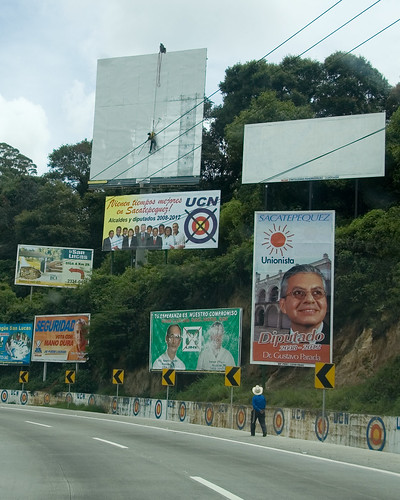 As in the U.S., the campaign in Guatemala includes television ads (clearly lower budget, the ones I saw were mostly just the candidate speaking to the camera); radio ads, often featuring full-length jaunty theme songs (particularly fun was a peppy Patriota salsa number with a cheery chorus refrain of Mano Dura!, literally "firm hand," but "iron fist" wouldn't be a bad translation); and billboards (uniformly basic with often unflattering pictures of the candidates, a name, and maybe a slogan). As in the U.S., it seems that every commercial space during campaign season is filled with a political ad -- the perilously dangling worker here is probably putting up an ad for the GANA, the biggest party not represented in the other billboards in the picture (click on the picture for a better view of the surely not-at-all-unsafe job).
As in the U.S., the campaign in Guatemala includes television ads (clearly lower budget, the ones I saw were mostly just the candidate speaking to the camera); radio ads, often featuring full-length jaunty theme songs (particularly fun was a peppy Patriota salsa number with a cheery chorus refrain of Mano Dura!, literally "firm hand," but "iron fist" wouldn't be a bad translation); and billboards (uniformly basic with often unflattering pictures of the candidates, a name, and maybe a slogan). As in the U.S., it seems that every commercial space during campaign season is filled with a political ad -- the perilously dangling worker here is probably putting up an ad for the GANA, the biggest party not represented in the other billboards in the picture (click on the picture for a better view of the surely not-at-all-unsafe job). 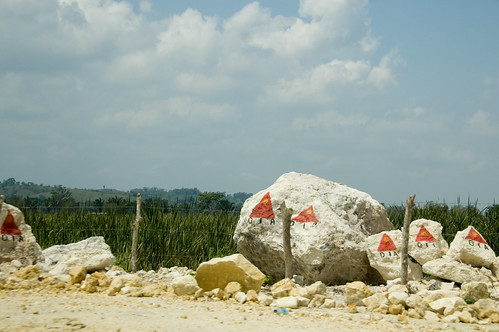 One local campaign tactic that you don't see so much in the U.S. is official graffiti. The political graffiti in Guatemala is ubiquitous. These are not simple spray-painted slogans; many are wall-sized murals, and all are clearly the result of party-sponsored efforts, despite the fact that such graffiti is technically illegal. There are stretches where every tree or rock (as above, on a road to Belize in the middle of nowhere) for hundreds of yards on end is painted with the logo of one political party. The law-and-order candidates endorsed by the graffiti are perhaps not fans of the "broken windows" approach to tackling big crime by first showing zero tolerance for little crimes.
One local campaign tactic that you don't see so much in the U.S. is official graffiti. The political graffiti in Guatemala is ubiquitous. These are not simple spray-painted slogans; many are wall-sized murals, and all are clearly the result of party-sponsored efforts, despite the fact that such graffiti is technically illegal. There are stretches where every tree or rock (as above, on a road to Belize in the middle of nowhere) for hundreds of yards on end is painted with the logo of one political party. The law-and-order candidates endorsed by the graffiti are perhaps not fans of the "broken windows" approach to tackling big crime by first showing zero tolerance for little crimes.The key to this style of campaign is the simple set of identifiers attached to each campaign. Almost every party has one primary color associated with it, although there is a little overlap. For example, the Patriotas are orange, and the UNE is green. So all you have to do is see that a stretch of highway has its rocks painted yellow to know that the PAN party has been there. On top of this, each party has a simple logo:
 The Patriotas have their fist (as you can see, not all the sign-painters are highly trained pros; the monstrously large thumb here is by no means the worst attempt at a fist that your correspondents saw).
The Patriotas have their fist (as you can see, not all the sign-painters are highly trained pros; the monstrously large thumb here is by no means the worst attempt at a fist that your correspondents saw). 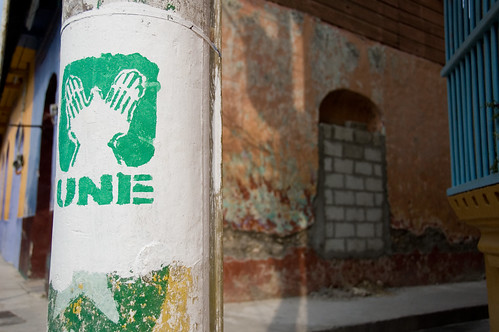 The UNE features a pair of hands making a bird.
The UNE features a pair of hands making a bird. 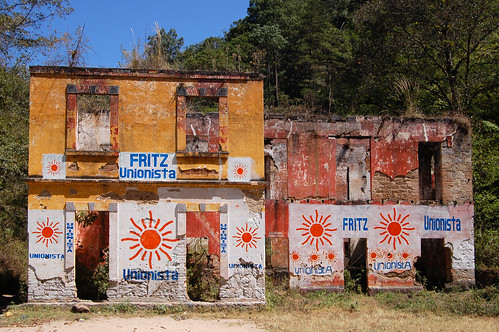 The Unionista party uses a shining sun as their symbol ("Fritz" is the name of their candidate. His running mate is named "Quique".)
The Unionista party uses a shining sun as their symbol ("Fritz" is the name of their candidate. His running mate is named "Quique".) 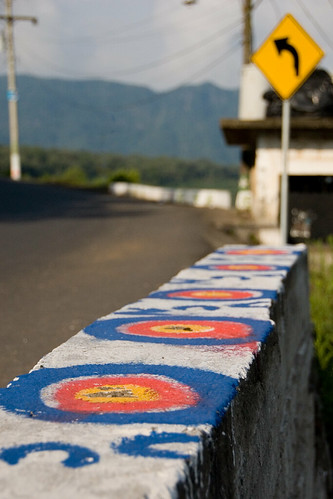 The UCN has a target.
The UCN has a target. 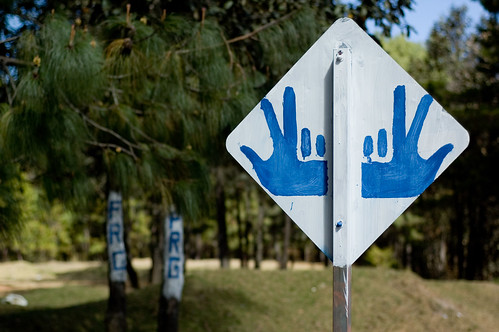 The FRG has a hand holding out three fingers.
The FRG has a hand holding out three fingers. 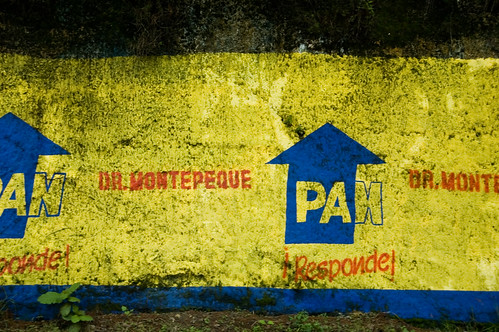 The PAN uses a blue italicized arrow.
The PAN uses a blue italicized arrow. Rigoberta Menchú's Encunetro por Guatemala party has a circular red-and-green symbol that this viewer thought of as a Christmas wreath and that isn't usually blurry except when photographed from a moving car.
Rigoberta Menchú's Encunetro por Guatemala party has a circular red-and-green symbol that this viewer thought of as a Christmas wreath and that isn't usually blurry except when photographed from a moving car. The outgoing ruling party, the GANA, uses a Mayan pyramid. Somehow, we failed to take an interesting picture of one, though. The symbols are so well-known that the party's name doesn't necessarily need to appear -- and they need to be. The ballot features the party's logo, so the voter doesn't need to do any reading, they just need to mark the red triangle if they want to vote for the DIA or the Pepsi logo-turned-into-a-fish for the Bienestar party. Local parties are in the mix, too, with more stenciled lavender cowboy hat or tractor symbols. One personal favorite is the "Mixco Renewal Movement," which appropriately chose a broom as their symbol.
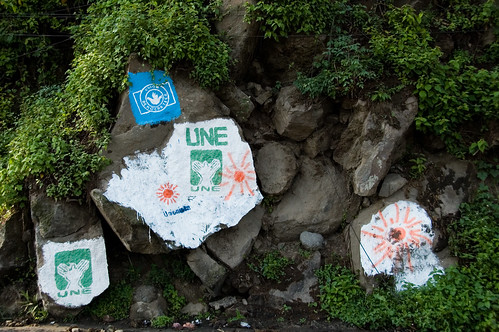
Since the graffiti are illegal in the first place, nobody seems to be regulating one party painting over another's logos. There was occasional re-use of spaces, but some sort of code of graffiti artist honor seems to have sprung up, as many parties seem to put their tags side-by-side rather than covering each others' stuff. Of course, rogue hooligans throw trash or tar or paint at opposing parties' graffiti, but no more frequently than they deface the billboards.
For a few more exciting pictures of Guatemalan political advertising in its many forms, see the full set of pictures at flickr. Disclaimer: This is intended to present to non-Guatemalan audiences a unique element of Guatemalan campaign season. In no way is any of this intended to endorse any party. Every party does this stuff, about equally.
Thursday, September 06, 2007
Coming Soon
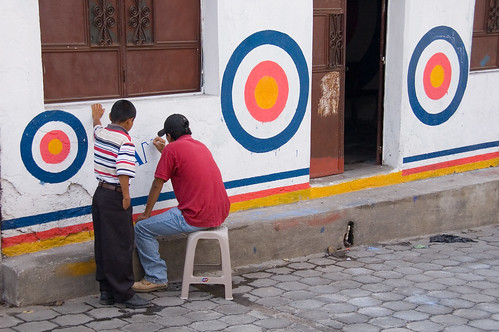
Our first big post-departure project is about to become a lot less timely. Above is a quick preview of a bunch of material from the photo department about political grafitti in the run-up to the Guatemalan elections on Sunday; we're hoping to have a further photo essay of sorts up by Saturday. So when you see the banner headlines on the Guatemalan election results on the front page of your local paper on Monday, think of us.
Wednesday, September 05, 2007
Back from August Recess

Somehow we survived the terrible hardship of having to spend an entire month of vacation in the U.S. during August, and somehow you survived a full month of the Holla not posting a thing -- not even a random picture here and there.
Well, we're back. Our final leg, a trek from Colorado to DC via Kansas (as pictured above: The Lovely Katherine contemplating the somewhat-pricey-but-definitely-worth-it glory of "Prairie Dog Town," a legitimate tourist attraction in Oakley, Kansas), Boston and New York, concluded a mere 16 hours before classes were set to begin yesterday. Now we are starting the long slog through eight months of Latvian. (Your correspondent can already refer to his faithful traveling companion as "my little heartflower" in Latvian; it remains unclear what remains for the balance of the eight month course.)
It is our hope that the combination of being stationary and certain budget overruns over the last month will inspire the editors to dedicate significant evening and weekend time to the Holla over the next few weeks. And we hope not all of our five loyal readers have totally forgotten us or assumed that we would cease publication upon our departure. We certainly have some tales to tell and, we think, several months' worth of pictures that we hope you'll like as much as the staff photographer does.
Subscribe to:
Posts (Atom)



